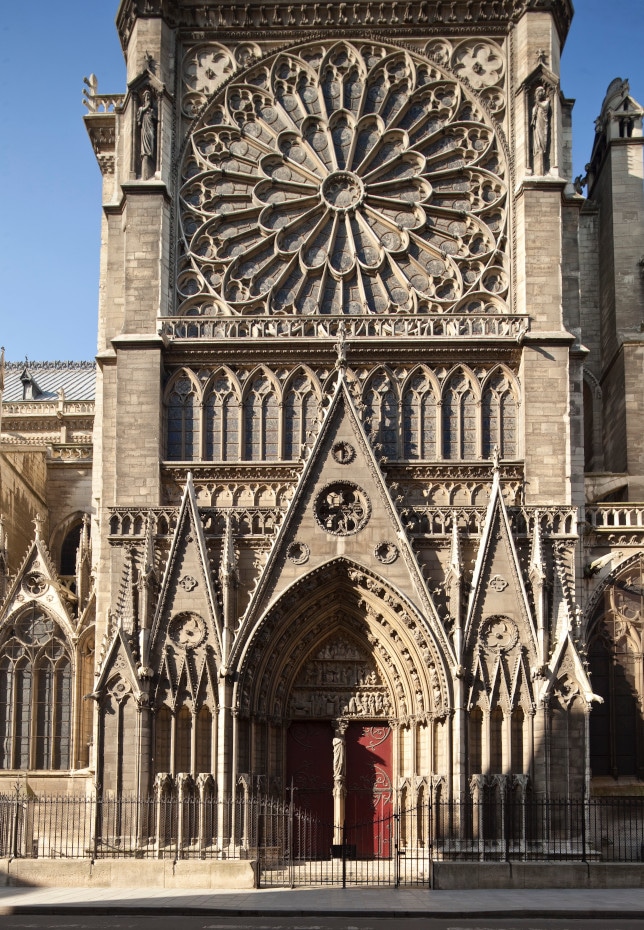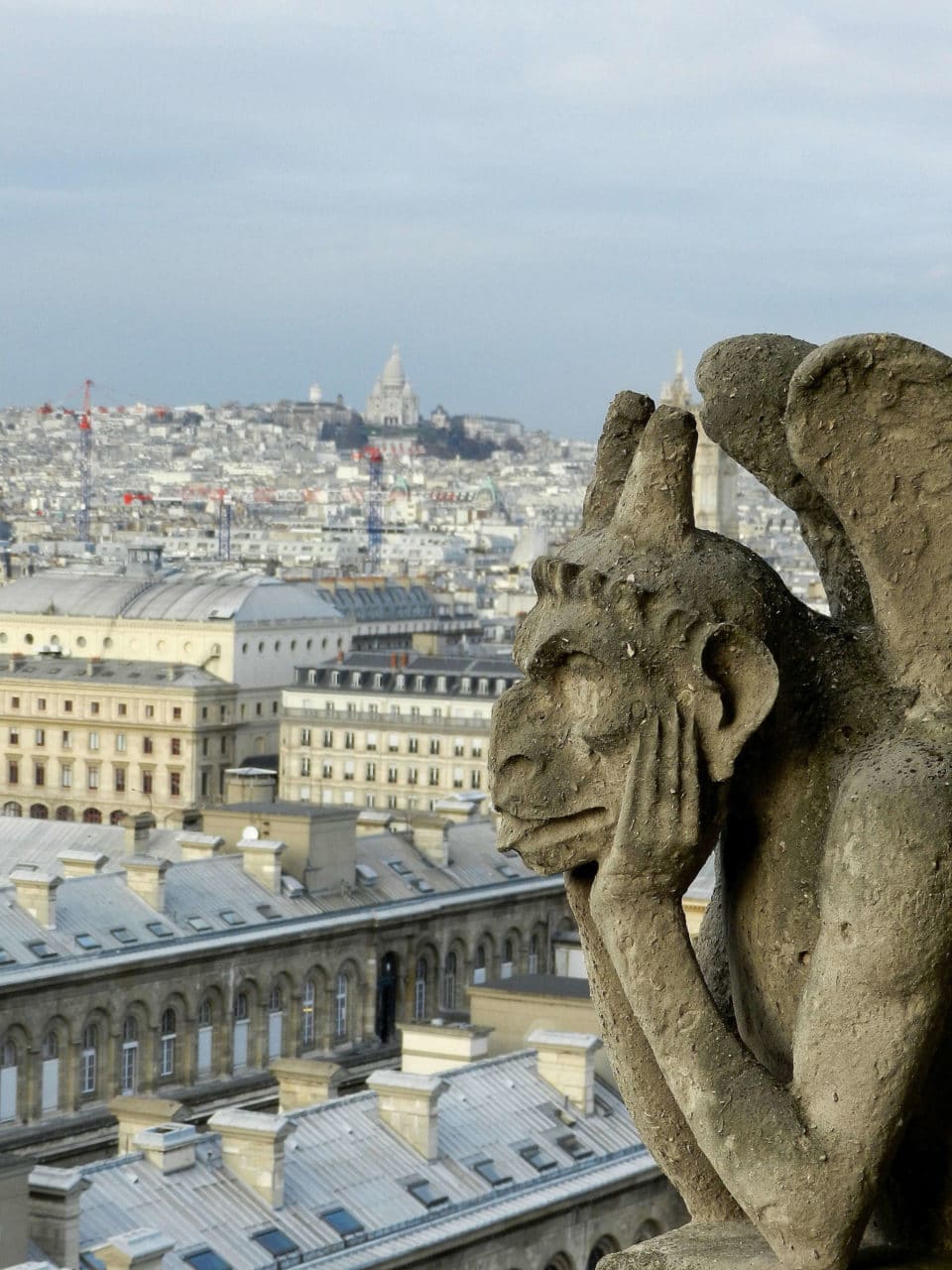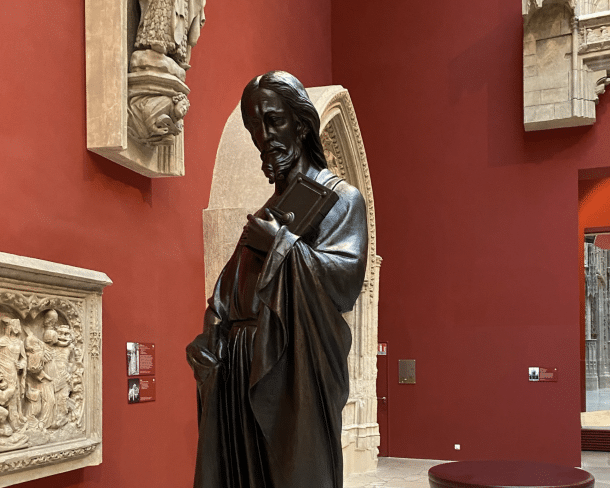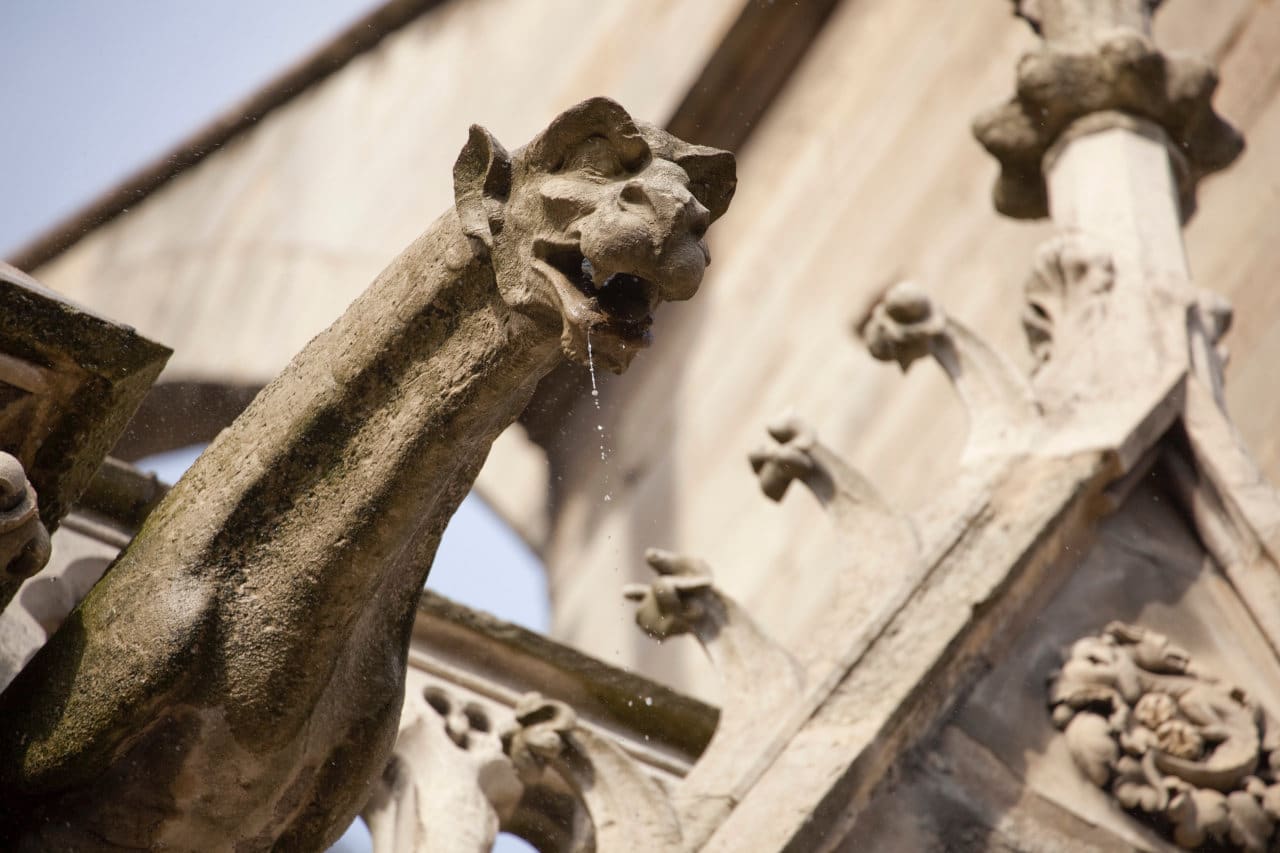The north façade and its cloister were built in the mid-13th century by Jean de Chelles. In the Middle Ages, the Notre-Dame cloister was accessible during the day, welcoming lay people in the service of the canons. In the middle of the 13th century, the canons decided to modify the shape of the cathedral and add an overhanging transept. Its construction predates the south façade. The north façade forms a long, dimly lit bay. It is divided into three floors, set back slightly from each other. It is bordered by a small street and never enjoys direct sunlight. The chapels placed later around the nave tend to erase the overflow of the arm of the transept.
The façade of the north cross has the same architectural elements as that of the south cross: a gable surmounts the portal, an openwork gallery with a large rose window occupies the middle part. A decorated triangular gable tops it all. A large pinnacle in the shape of bell towers rises at its base on each side. It is adorned with a rose that illuminates the attic of the north transept.
A statue of the Virgin and Child is placed in the trumeau, a pillar dividing the cloister’s doorway, in the center of the portal. The Virgin’s features modeled on Marguerite de Provence, wife of Saint Louis. Her posture is delicate, swaying slightly. The drape with soft folds accentuates the effect of majesty, and her motherly smile interprets a humanized Christianity. The image of the woman and the mother take on all their importance here.
While the statue escaped the ravages of the French Revolution, the child carried in the Virgin’s arms has disappeared. The revolutionaries destroyed the six statues of the abutments, representing the wise men and theological virtues.
The lintel, in the lower part of the tympanum (the space between the lintel and the arches of the portal), represents four scenes from the childhood of Christ: the nativity, the presentation in the temple, the massacre of the innocent by Herod and the flight into Egypt. The somber elegance, the delicacy of the faces, the drapes with deep folds are typical of 13th century Parisian sculpture.
The upper part of the tympanum represents the Theophilus miracle. The young clerk, Theophilus is jealous of the bishop. To supplant him and get out of poverty, he sells his soul to the devil. With the help of the devil, he humiliates the bishop. Then, not knowing how to get out of the situation, he implores Mary, who manages to cancel the pact. Theophilus repents as a sign of gratitude.



